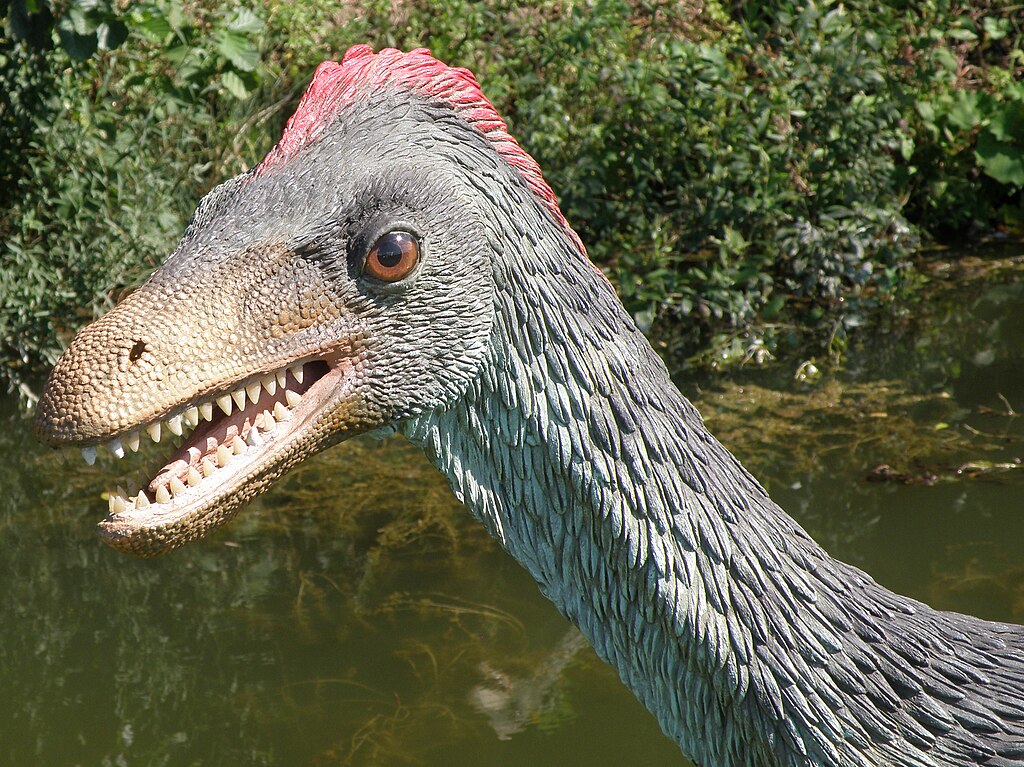When we think of prehistoric predators, few inspire as much awe and fascination as the mighty Tyrannosaurus rex. However, recent scientific research has revealed surprising insights about bite forces among dinosaurs, challenging some of our long-held assumptions. The quest to determine which dinosaur possessed the most powerful bite has led paleontologists on a fascinating journey through fossil evidence, comparative anatomy, and cutting-edge biomechanical modeling.
This article explores what we currently know about the dinosaur with the strongest bite force ever measured, how scientists make these determinations, and what these findings tell us about prehistoric predatory adaptations.
The Contenders for Prehistoric Bite Force Champion
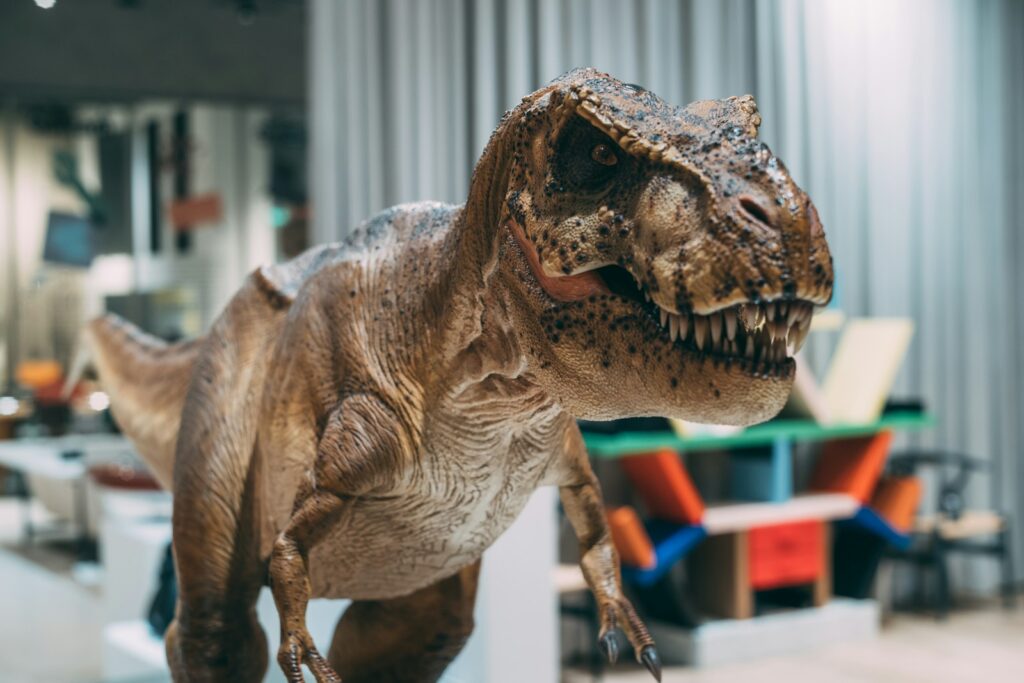
For many years, the conversation about powerful prehistoric bites centered primarily around the Tyrannosaurus rex, the iconic apex predator of the late Cretaceous period. However, the field of contenders has expanded significantly as research methodologies have advanced. Several formidable candidates now compete for the title of strongest bite, including Spinosaurus, with its crocodile-like snout; Carcharodontosaurus, the “shark-toothed lizard”; and various large allosaurids.
Perhaps most surprisingly, some herbivorous dinosaurs like Triceratops possessed remarkably powerful bites evolved for processing tough plant matter rather than flesh. Each of these dinosaurs developed specialized jaw mechanisms and dental adaptations that reflected their ecological niches and hunting or feeding strategies.
Tyrannosaurus Rex: The Former Champion
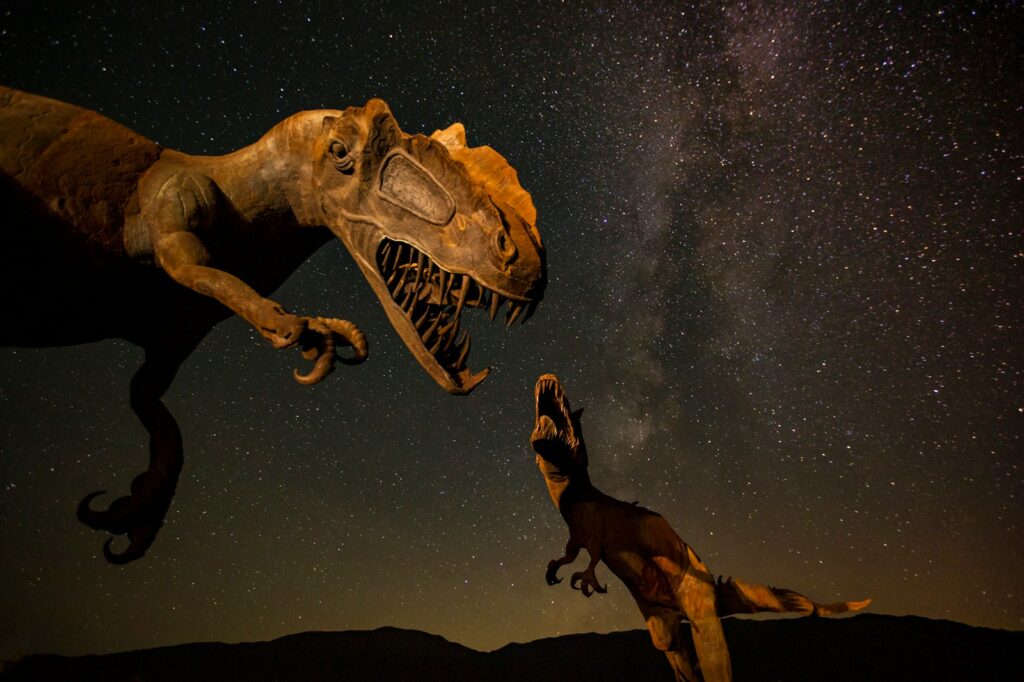
Tyrannosaurus rex long held the title for the strongest bite force among dinosaurs, with early estimates suggesting its bite could exert up to 12,800 pounds of force. This massive theropod, which lived approximately 68-66 million years ago during the Late Cretaceous period, possessed a skull engineered for tremendous biting power. Its robust cranium featured reinforced bone structures specifically designed to withstand the enormous stresses generated during powerful bites.
The T. rex’s famous banana-sized teeth were anchored deeply in its jaws, allowing it to crush bones and tear through the toughest tissues of its prey. The dinosaur’s bite was further enhanced by its unique heterodont dentition—different tooth shapes specialized for different functions—enabling it to both slice and crush with devastating efficiency. These adaptations made the T. rex one of history’s most formidable terrestrial predators, capable of processing nearly any prey it encountered.
Measuring Ancient Bite Forces: The Scientific Methodology

Determining the bite force of extinct animals presents unique challenges that have required scientists to develop innovative research techniques. Modern paleontologists utilize several complementary approaches to estimate prehistoric bite forces with increasing accuracy. Computer modeling, particularly finite element analysis (FEA), allows researchers to digitally reconstruct dinosaur skulls and simulate the mechanical stresses they could withstand. Comparative anatomy provides another valuable avenue, as scientists can extrapolate from the bite forces of living relatives like birds and crocodilians, adjusting for differences in size and skull architecture.
Fossil evidence offers direct clues through tooth marks preserved in bones, coprolites (fossilized feces), and patterns of dental wear that indicate feeding behaviors and jaw strength. Muscle attachment sites visible on well-preserved skulls provide crucial information about the size and power of jaw muscles, which directly correlates with bite force. Together, these methodologies have revolutionized our understanding of dinosaur feeding mechanics.
Introducing Deinosuchus: The Unexpected Record Holder
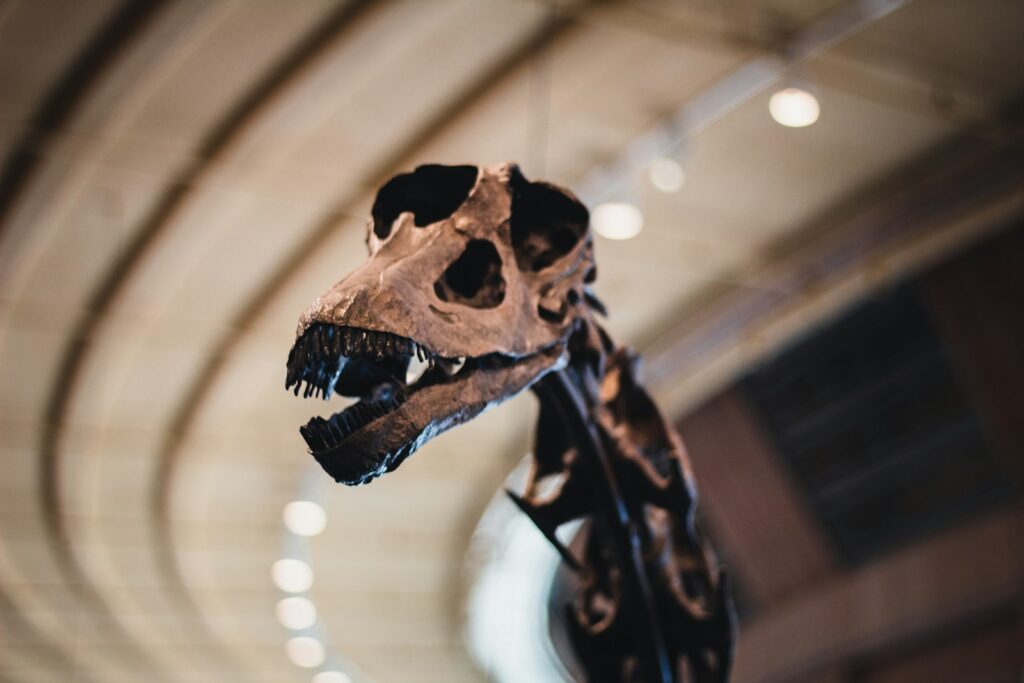
While technically not a dinosaur but a prehistoric crocodilian, Deinosuchus deserves mention as it possessed one of the strongest measured bite forces of any prehistoric animal. This massive crocodilian lived alongside dinosaurs during the Late Cretaceous period, approximately 82 to 73 million years ago, reaching estimated lengths of up to 39 feet. Biomechanical studies suggest Deinosuchus could generate bite forces exceeding 23,000 pounds at its posterior teeth, dramatically surpassing even T. rex. The creature’s enormous size and specialized jaw structure allowed it to ambush and capture large dinosaurs that came to the water’s edge.
Fossil evidence, including distinct bite marks on dinosaur bones, confirms that Deinosuchus was capable of attacking and consuming large dinosaurs, making it a rare example of a non-dinosaurian predator that actively hunted dinosaurs. This ancient crocodilian represents an important reminder that dinosaurs weren’t always at the top of their food chains.
The True Champion: Spinosaurus Aegyptiacus
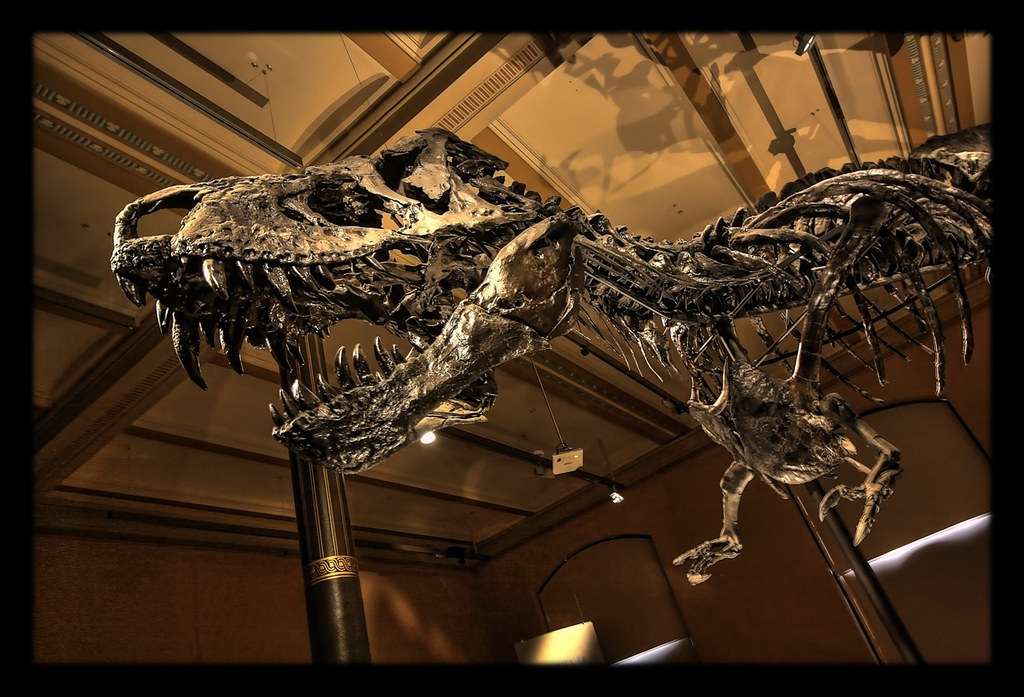
Among true dinosaurs, recent research suggests that Spinosaurus aegyptiacus may have possessed the strongest bite force ever measured. This semi-aquatic theropod, which lived approximately 99-93.5 million years ago during the mid-Cretaceous period, has gained attention for its extraordinary adaptations. Advanced biomechanical models estimate that Spinosaurus could generate bite forces between 15,000-20,000 pounds, significantly exceeding the T. rex’s capabilities. The dinosaur’s elongated, crocodile-like snout was packed with conical teeth perfectly adapted for catching and holding slippery prey like fish.
Spinosaurus featured reinforced skull sutures and robust mandibles that could withstand tremendous pressure when clamping down on struggling prey. These adaptations reflect its specialized hunting strategy as a piscivore (fish-eater), though evidence suggests it was opportunistic enough to tackle larger terrestrial prey when available. The extraordinary bite force of Spinosaurus represents a prime example of how specialized feeding adaptations can drive the evolution of extreme physical capabilities.
Carcharodontosaurus: The Shark-Toothed Contender
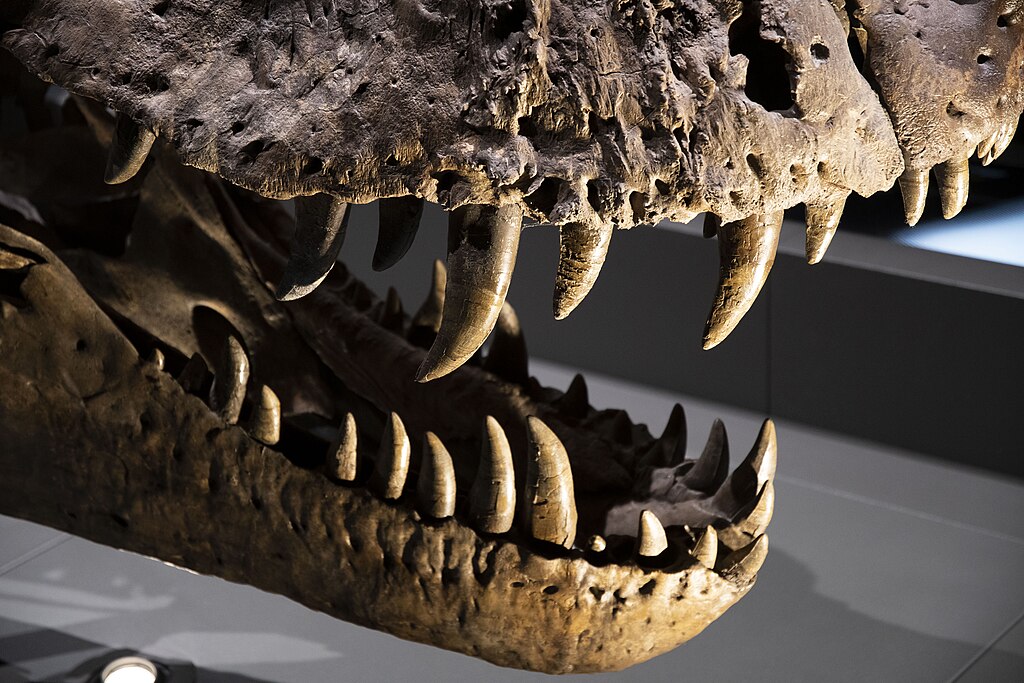
Carcharodontosaurus saharicus represents another top contender for the strongest dinosaur bite force. This massive theropod, whose name means “shark-toothed lizard,” lived during the mid-Cretaceous period approximately 100-94 million years ago in North Africa. Detailed analysis of its skull morphology suggests it could produce bite forces comparable to or possibly exceeding those of T. rex, potentially reaching 13,000-15,000 pounds at its strongest teeth.
The distinctive serrated teeth of Carcharodontosaurus evolved specifically for slicing through flesh with devastating efficiency, resembling the teeth of great white sharks in both form and function. Its skull featured reinforced stress-bearing structures that allowed it to withstand the tremendous forces generated during powerful bites without fracturing. Though slightly lighter in build than the T. rex, the Carcharodontosaurus possessed a larger skull relative to body size, potentially allowing for greater bite pressure. These adaptations made Carcharodontosaurus an apex predator capable of hunting the largest dinosaurs in its ecosystem.
Size Versus Bite Force: Understanding the Relationship
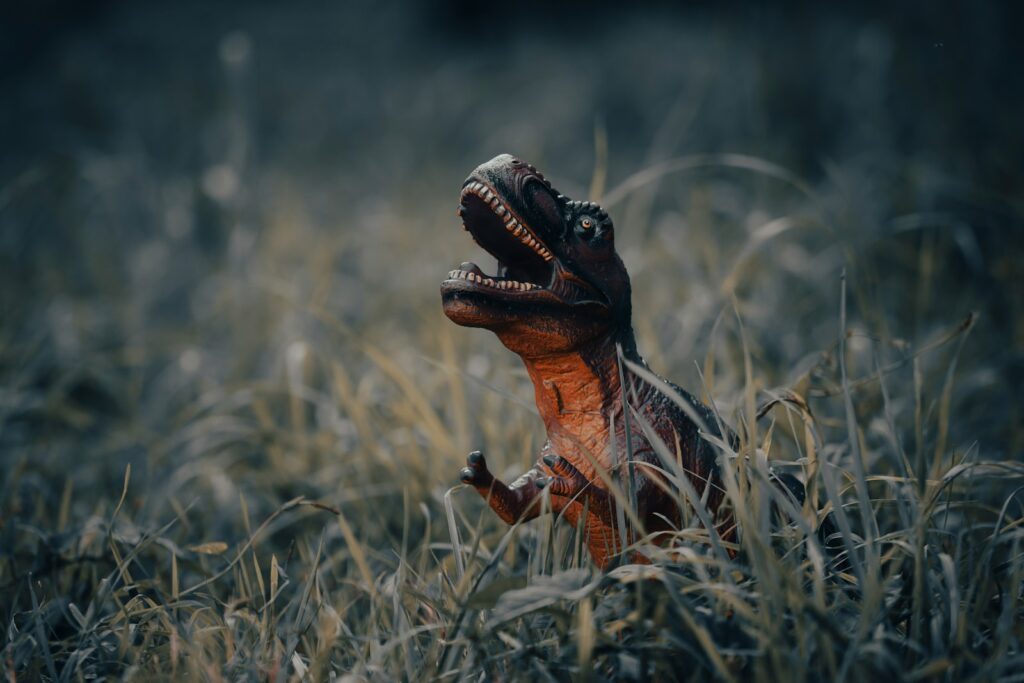
A fascinating aspect of dinosaur bite force research involves understanding that sheer size doesn’t always correlate directly with biting power. Multiple factors beyond simple body mass determine a dinosaur’s bite force, creating some counterintuitive results. Skull architecture plays a crucial role, with the positioning of jaw muscles, mechanical advantage of the jaw lever system, and reinforcement of stress-bearing structures all contributing significantly to bite performance.
Tooth morphology directly impacts bite force distribution, with some dinosaurs evolving specialized teeth that concentrated forces at particular points for maximum efficiency. Diet specialization drives evolutionary adaptations to bite mechanics, with some smaller predators evolving disproportionately powerful bites for their size based on their feeding requirements.
The mechanical advantage of a jaw system—essentially how efficiently muscle force translates to bite force—can vary dramatically between species of similar size, explaining why some smaller dinosaurs could generate surprising bite strengths that belied their dimensions.
Adaptations Behind Powerful Bites: Skull Design and Musculature
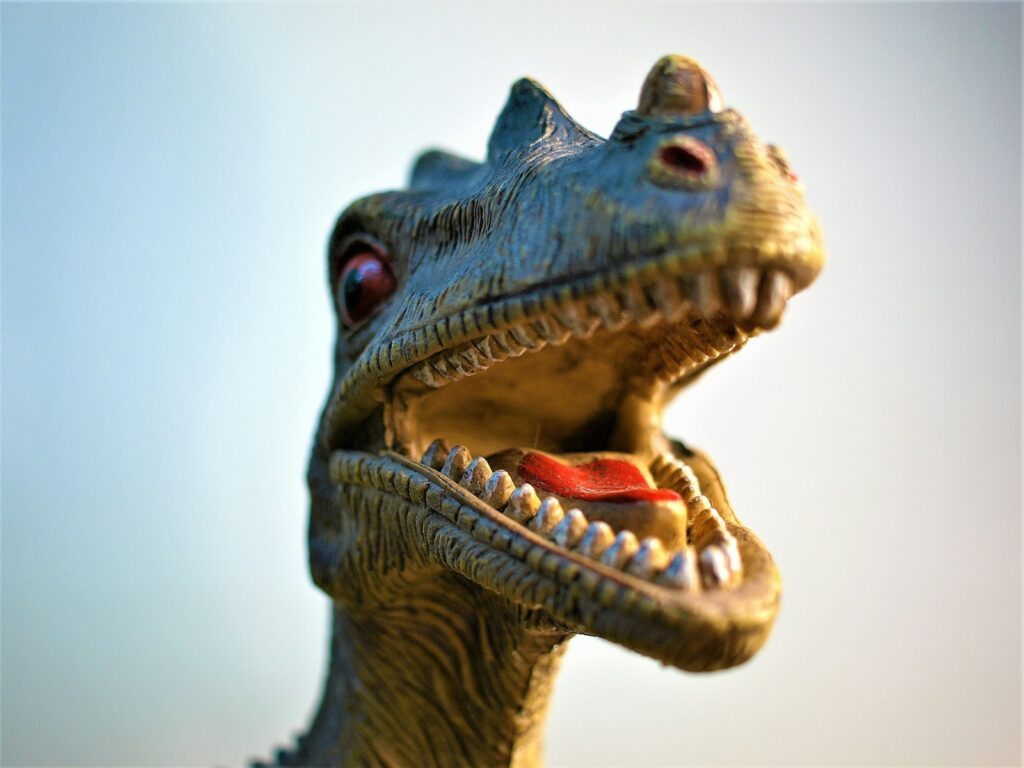
The extraordinary bite forces achieved by certain dinosaurs resulted from specialized evolutionary adaptations to their skulls and jaw musculature. Among the most important features was cranial reinforcement, with stress-absorbing structures like reinforced sutures and buttressed bones that prevented fractures during powerful bites.
Advanced jaw muscle arrangements created mechanical advantages that multiplied raw muscle strength, particularly through the positioning of the temporalis and masseter muscles that controlled jaw closure. Bite force was further enhanced through specialized tooth arrangements, with some dinosaurs evolving heterodont dentition featuring different tooth types for different functions, maximizing the effectiveness of their bite force.
Perhaps most crucial was the kinetic skull design—while mammals have rigid skulls, many dinosaurs possessed kinetic skulls with joints that flexed during biting, dissipating forces that might otherwise damage their cranium. These adaptations collectively allowed certain dinosaurs to evolve bite forces that would be impossible with mammalian skull architecture.
Surprising Herbivore Bite Forces: Triceratops and Its Relatives

While carnivorous dinosaurs typically dominate discussions of powerful bites, certain herbivorous dinosaurs evolved bite forces that rivaled or even exceeded those of their predatory counterparts. Triceratops, with its distinctive three-horned face, possessed a bite force estimated at approximately 8,000-10,000 pounds, placing it among the strongest-biting dinosaurs of any dietary preference. The immense bite strength of Triceratops derived from its need to process tough, fibrous Cretaceous vegetation, requiring powerful jaw muscles attached to a robust skull designed for continuous grinding pressure.
Other ceratopsians (horned dinosaurs) shared this adaptation, evolving specialized “dental batteries”—tightly packed rows of teeth that formed continuous cutting surfaces perfect for processing resistant plant matter. The herbivorous ankylosaurs and hadrosaurids also evolved surprisingly powerful bites, demonstrating that the evolutionary pressure to efficiently process tough plant materials drove the development of formidable jaw strength just as effectively as the need to subdue struggling prey did for carnivores.
Modern Animals with Comparable Bite Forces
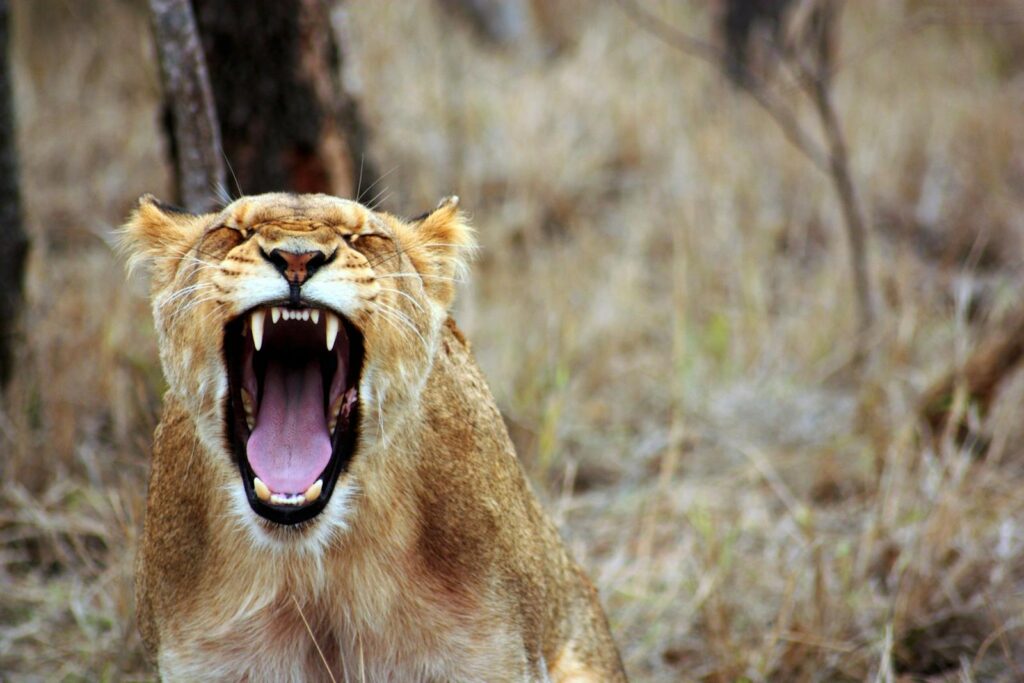
Comparing dinosaur bite forces to those of modern animals provides valuable context for understanding these ancient capabilities. The saltwater crocodile currently holds the record for the strongest measured bite force among living animals, generating up to 3,700 pounds of force—impressive but far below the estimated forces of the largest dinosaurs.
Great white sharks produce bite forces of approximately 4,000 pounds, utilizing a specialized jaw structure that sacrifices sustained pressure for explosive initial force. The spotted hyena, despite its relatively modest size, can generate around 1,100 pounds of bite force, specialized for crushing bones, and utilizing nearly 100% of its theoretical maximum force based on muscle mass.
Even the powerful jaws of large cats like tigers and lions, which produce approximately 1,000 pounds of force, fall far short of a dinosaur capabilities. These comparisons highlight the truly exceptional nature of dinosaur bite mechanics and demonstrate the unique evolutionary pathways that led to such extreme adaptations in these prehistoric reptiles.
Ecological Implications of Extreme Bite Forces

The extraordinary bite forces developed by certain dinosaurs had profound implications for prehistoric ecosystems and evolutionary dynamics. Powerful bites served as ecological niche definers, allowing certain dinosaurs to specialize in prey or plant foods that were inaccessible to competitors with weaker jaws.
This specialization drove evolutionary arms races, with prey species developing defensive adaptations like thicker bones, protective armor, and evasive behaviors specifically to counter predators with devastating bite forces. Ecosystem engineering occurred as powerful-biting dinosaurs altered their environments by being able to process materials that other animals could not, such as breaking down large carcasses or tough plant matter that would otherwise decompose more slowly.
Perhaps most significantly, these bite forces created distinct trophic cascades, as apex predators with exceptional biting capabilities could regulate populations of large herbivores, influencing vegetation patterns and even landscape evolution across entire regions. The ripple effects of these specialized feeding adaptations thus extended throughout entire prehistoric ecosystems.
Future Research: What We Still Don’t Know

Despite significant advances in understanding dinosaur bite forces, substantial knowledge gaps remain that future research aims to address. Soft tissue uncertainties present a major challenge, as paleontologists must make educated estimates about muscle mass, fiber orientation, and connective tissue properties that aren’t preserved in fossils but significantly impact bite performance.
Growth-related questions persist about how bite forces changed throughout dinosaur life cycles, with preliminary evidence suggesting young dinosaurs had dramatically different bite characteristics than adults of the same species. Researchers continue refining their biomechanical models, incorporating new findings from materials science and engineering to create increasingly accurate simulations of prehistoric bite mechanics.
Perhaps most excitingly, new fossil discoveries continue to reshape our understanding of dinosaur diversity, with previously unknown species occasionally demonstrating unexpected adaptations that challenge existing theories about bite force evolution. The integration of multiple scientific disciplines, from paleontology to engineering to comparative zoology, promises to yield increasingly refined estimates of dinosaur bite capabilities in coming years.
The Legacy of Powerful Biters in Evolutionary History

The evolution of extreme bite forces represents one of nature’s most remarkable examples of specialized adaptation, with implications that extend far beyond dinosaurs themselves. These powerful biting mechanisms demonstrate convergent evolution, as similar bite force adaptations evolved independently multiple times across different dinosaur lineages in response to similar ecological pressures.
The legacy of these adaptations continues in modern birds, the direct descendants of theropod dinosaurs, which have inherited modified versions of the specialized skull kinetics that enabled their ancestors’ powerful bites. Studying dinosaur bite mechanics has contributed significantly to our understanding of biomechanical principles, revealing natural solutions to engineering challenges that continue to inspire innovative technologies and materials.
Perhaps most profoundly, these extraordinary adaptations highlight the remarkable plasticity of vertebrate evolution, demonstrating how the basic tetrapod skull—a structure dating back over 375 million years—could be modified to produce some of the most powerful biting mechanisms in Earth’s history through the cumulative effects of natural selection operating over millions of years.
Conclusion

The quest to identify the dinosaur with the strongest bite force continues to evolve as new research techniques and fossil discoveries enhance our understanding. While Spinosaurus currently holds the title among true dinosaurs with an estimated bite force between 15,000-20,000 pounds, this conclusion remains subject to refinement.
What’s clear is that the extreme bite forces achieved by various dinosaurs represent remarkable evolutionary adaptations that helped shape Mesozoic ecosystems for millions of years. These specialized feeding mechanisms allowed different species to exploit unique ecological niches, driving diversity and evolutionary arms races between predators and prey.
As paleontological methods continue to advance, our appreciation for these prehistoric marvels of biological engineering only deepens, providing valuable insights into both ancient ecosystems and the fundamental principles of evolutionary adaptation.

